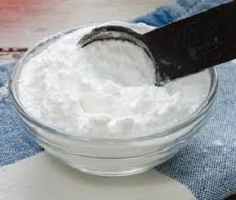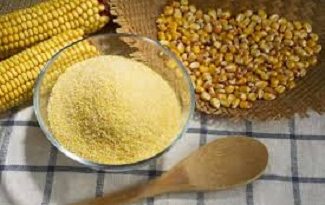Baking Powder Recipe, Substitutes, and Uses
Baking powder is a dry chemical leavening agent made of three different ingredients:
- A base
- An acid
- A filler of some sort
Baking soda (a base also called carbonate or bicarbonate), cream of tartar (an acid) and corn starch (the filler) are three prevalent ingredients.

Providing the powder stays dry, the two ingredients remain apart. But the minute you add a liquid, the acid and alkaline ingredients combine and produce carbon dioxide.
Specially for you >>> Baking Soda vs. Baking Powder: Any Difference?
Baking powder chemical name is sodium hydrogen carbonate or bicarbonate of soda by some manufacturers.
Bicarbonate of soda is the old name for the same product. It has the chemical formula NaHCO3.
Baking Powder: How Does It Work?
It works by releasing carbon dioxide gas into a batter or dough over an acid-base reaction, producing bubbles in the wet mixture to enlarge and thus leavening the mixture.
The introduction of sodium hydrogen carbonate is innovatory in reducing the time and labor of making bread-stuffs. It led to the formation of new types of cookies, cakes, biscuits, and other baked goods
Baking Powder Varieties
There are single-acting and double-acting baking powders. Most commercial sodium hydrogen carbonate are double-acting – this means that the first leavening occurs when sodium hydrogen carbonate gets wet while the second leavening occurs when the baking powder is heated.
Baking Powder Substitutions: How to substitute for baking powder and baking soda
Baking powder and baking soda are both baking basics, and depending on the specific recipe you may need one or the other (or even both).
Yes, it’s possible but tricky, providing there is enough of an acidic ingredient to make a reaction
Please, always have it at the back of your mind that baking soda has 4 times the power of baking powder
You can also swap in lemon juice, plain yogurt, buttermilk, vinegar, or molasses
Additionally, sodium hydrogen carbonate is used as a replacement for yeast for end-products where fermentation flavors would be unwanted.
In cases where the batter lacks the elastic structure to hold gas bubbles for more than some minutes, sodium hydrogen carbonate comes in.
Baking Powder vs. Yeast – Any preference
The reason why people often choose baking powder to yeast is that yeast takes so long — typically two to three hours — to produce its bubbles.
sodium hydrogen carbonate is immediate, so you can mix up a batch of biscuits and eat those 15 minutes later.
Baking Powder vs. Yeast vs. Baking Soda
When it comes to baking, it can be difficult to make out which leavening product to use and what the end – result will be.
Sodium hydrogen carbonate is commonly used in recipes that do not contain extra acid; where mainly water and heat are needed.
Yeast varies from both baking soda and sodium hydrogen carbonate , mostly because it is a live organism and takes a considerably longer time to leaven the dough.
Unlike both powders, yeast leavens dough through a biological process that results in fermentation.
Taste
Sodium hydrogen carbonate is non-toxic with a slightly bitter taste. Not to be eaten in its powder form but to mix into other ingredients.
Uses
Firstly, it is used as a leavening agent in baked goods. Besides cooking, it can be used for face, skin, teeth, hair, clearing acne, and weight loss.
It can also be used as a cleaning agent for household items.
Storage
Keep the sodium hydrogen carbonate in a sealed container in a dark, dry place. Take note of the expiration date. Once it passes its date, you can use it as baking soda.
If you don’t have this leavening powder, you can make your own. Here’s how to:
Homemade Baking Powder Recipe
To make combine one part baking soda to one part cornstarch and two parts cream of tartar.
This provides the equivalent of one teaspoon of homemade baking powder.
For example:
Ingredients
- ¼ teaspoon cornstarch
- ½ teaspoon cream of tartar
- ¼ teaspoon baking soda
Nutrition Facts
Per Serving:
4.3 calories; 0 g protein; 1 g carbohydrates; 0 mg cholesterol; 210.3 mg sodium
Side Effects: Overdose
It is a cooking product that assists batter to rise.
It is non-toxic when used in cooking and baking. All the same, severe complications can occur from overdoses or allergic reactions.
The overdose symptoms include:
- Abdominal pain
- Nausea
- Thirst
- Vomiting (severe)
- Diarrhea (severe)
This is for information only; always seek for medical attention in the treatment or management of an actual overdose.


